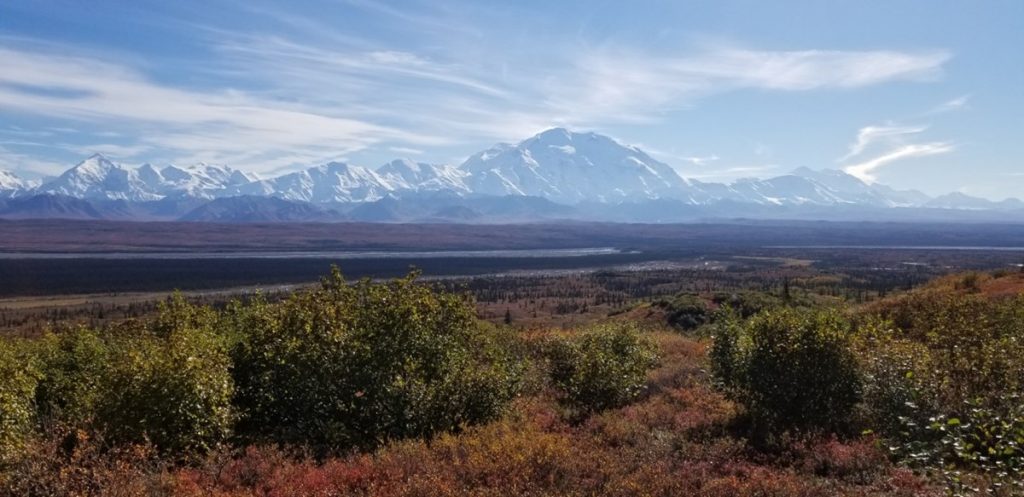NPS Floats Ideas for Kantishna-Wonder Lake Plan

The National Park Service has released a range of proposals for a Kantishna and Wonder Lake Area Plan, with comments due on October 31, 2019. NPS is continuing with its recent practice of seeking public input on a range of ideas before preparing a National Environmental Policy Act (NEPA) compliance document (Environmental Assessment or Environmental Impact Statement) that contains formal alternatives and a preferred alternative that the agency actually intends to implement. Responding to this document is thus a great way to get involved and make your thoughts known before the agency has largely made up its collective mind.
In this case, your input is urgently needed. NPS and west-end stakeholders have long recognized the need for a Kantishna-area plan to address a host of issues related to the increase in visitation over time, particularly as more lodges have developed and expanded on private inholdings bringing ever more visitors to the end of the road. The 1986 General Management Plan, 1997 Entrance Area and Road Corridor Development Concept Plan, and 2006 Backcountry Management Plan all addressed various needs for trails, administrative facilities, and overnight accommodation in Kantishna while leaving specific decisions up to a future implementation plan. Particularly glaring examples of the problems to be addressed are the muddy, eroding social trails that serve as hiking routes (mostly for Kantishna lodge guests) and the proliferation of “temporary” administrative sites at places like Friday Creek and Dalle-Molleville whose longevity has given them the air of permanence.
That said, the range of ideas presented includes not just a response to the previously-identified needs, but envisions a vast expansion of visitor and administrative use at the west end of the park road. The document details up to 80 miles of trails, backcountry campsites, a new roadside campground, bus depot and maintenance facilities to support a loop bus system, and administrative facilities to support the residence and work of up to 25 employees. Included are ideas for more guided opportunities such as guided camping or biking, while seeming to indicate that those opportunities will be considered anyway, outside of this process although the proposed “group campsite” would certainly be necessary to accommodate some of them. The plan encompasses not just the Kantishna area, but brings some of the infrastructure development into the Wonder Lake area as well, including potential trails, a bus depot, and a Wonder Lake Campground expansion as one possible way of providing more roadside camping opportunities.
DCC is very supportive of completing a plan for the Kantishna area that addresses existing damage to park resources, rationalizes the administrative footprint, and anticipates potential impacts from increases in private lodge visitors. However, we will be closely critiquing the document to be sure that NPS is not promoting additional visitation to Wonder Lake and Kantishna. (In fact, we wonder why Wonder Lake is included at all, except perhaps in the need to consolidate administrative facilities.) Additional visitation to the west end would likely require additional use on the park road where indications are that capacity is already maxed out. Conceivably more visitors could arrive by aircraft, but that in turn would further degrade the wilderness and natural soundscape values in the backcountry along the travel route.
In the mid-1990s, NPS recognized that the capacity along the road corridor was filling up if not full, and developed two plans designed to disperse use to other locations in Denali so that the park road would not be the only destination where visitors could go to have a Denali National Park experience. This was the correct conclusion at the time and remains so today. The forthcoming Kantishna plan should not backslide by encouraging more travel along the park road. We would love to see some aggressive actions proposed for preventing unmanaged expansion of visitation originating from private lands, such as a new commitment to finding ways to purchase or obtain conservation easements on remaining undeveloped private lands. If NPS would like capacity in Kantishna for any park visitors who can’t afford to stay at pricey lodges – and the road capacity to get there — it needs to identify and pursue strategies to cap the expansion of those private facilities. This is actually a much bigger crisis than the issues NPS is addressing in the Kantishna and Wonder Lake Area Plan.
NPS held two public meetings to describe the project in late August at the Wonder Lake Ranger Station and the Murie Science and Learning Center. Now the main opportunity for public involvement is by submitting written comments, which you can do through the National Park Service planning website at https://parkplanning.nps.gov/projectHome.cfm?projectId=83494.
Article by Charlie Loeb

